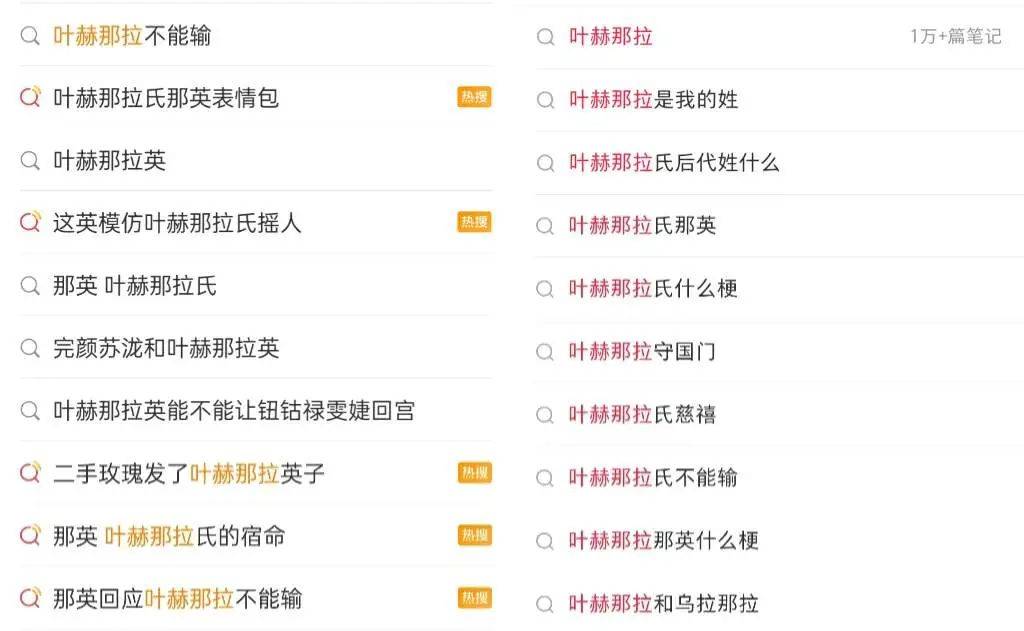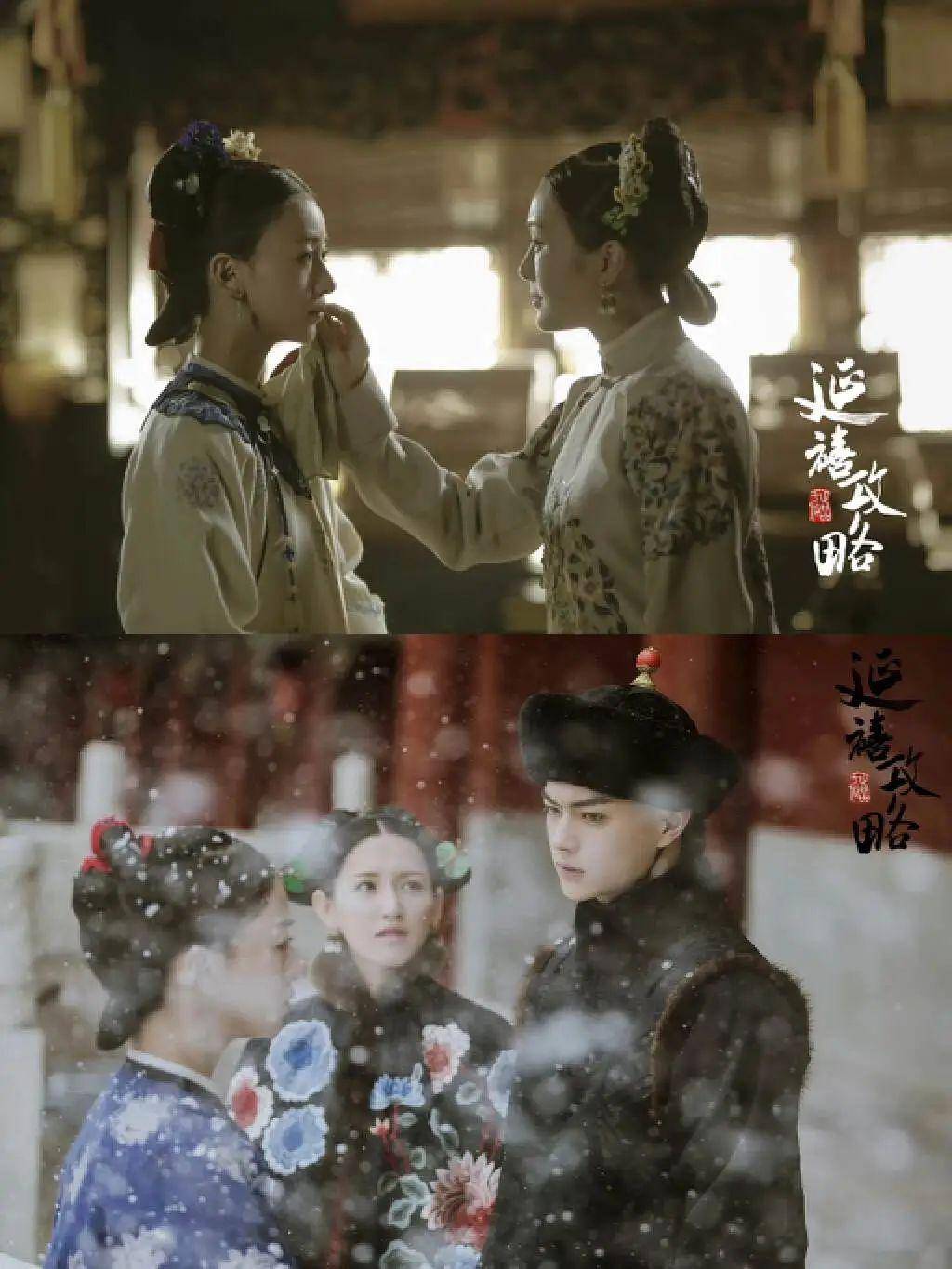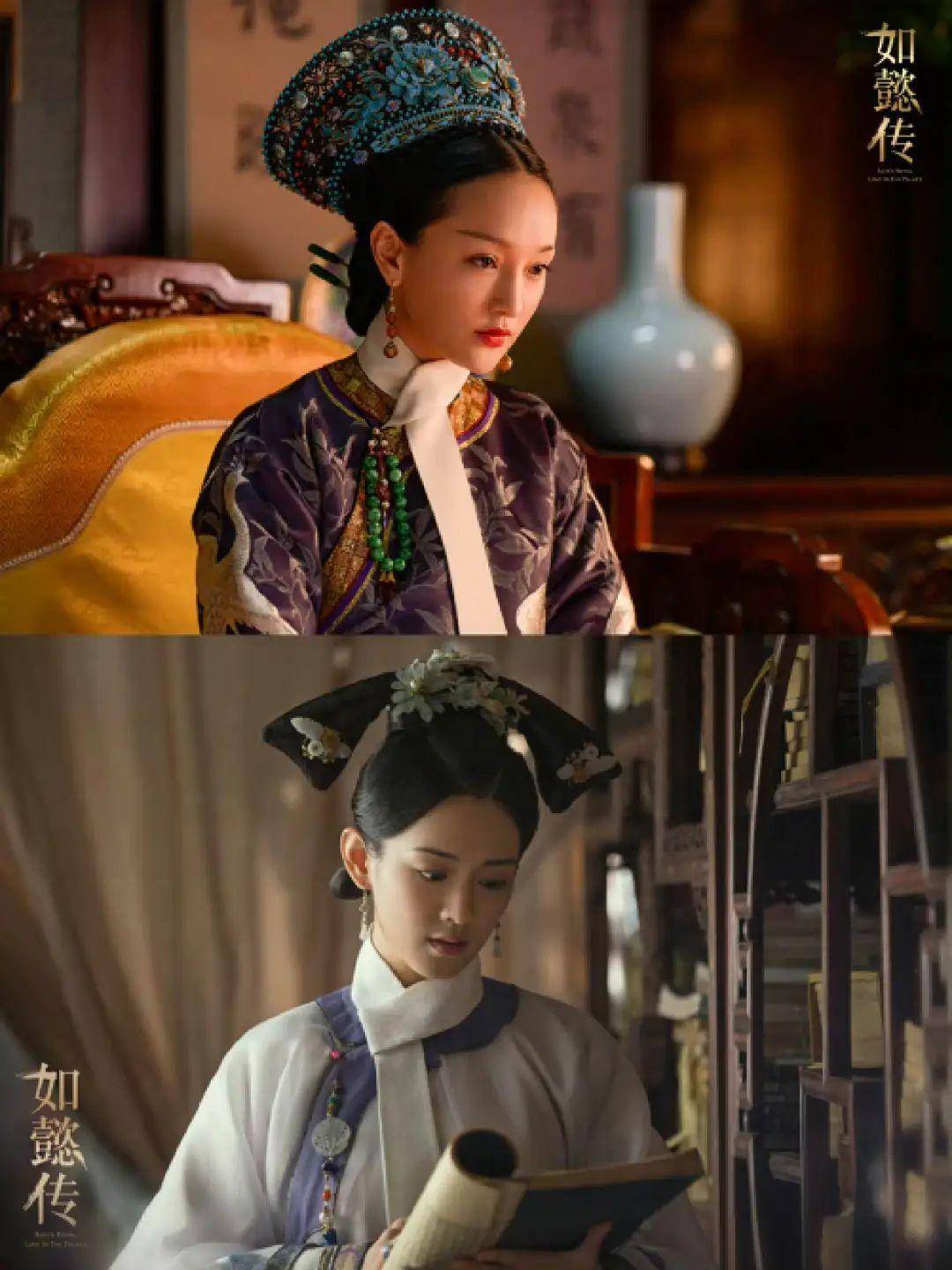秒词邦
分题型分考点背单词 文
文 文
文
叶赫那拉英子,这谁给我起的名?
今晚《歌手2024》的第二场直播竞演,又引发了一轮观众的热烈讨论。
节目开播前,那英自曝曾因《歌手2024》的直播赛制崩溃,登上了热搜。
在首期节目里,包揽头两名的分别是美国歌手和加拿大歌手,那英紧随其后。57岁的她被网友寄予厚望,具体表现为被起名“叶赫那拉英子”,被喊话“叶赫那拉氏不能输”,一个人就占了一半以上的爆梗。

《歌手》节目中的那英丨图源:湖南卫视《歌手》官方微博
不少人一开始对“叶赫那拉英子”这个名字不明所以,经过网友科普才知道,原来那英是满族人,清朝叶赫那拉氏的后裔。
一夜之间,这个在现实中早已消失的满族姓氏重回大众视野,还顺带捎上了“完颜”“钮祜禄”“乌拉那拉”等名声在外的兄弟姐妹。

社交媒体上出现大量关于“叶赫那拉”的搜索词条丨图源:微博 小红书
这些曾经显赫一时的满族姓氏,今天都去哪了?
“满族八大姓”,不止八个
说到满族姓氏,许多人会立刻联想到有名的“满族八大姓”。不过,关于满族八大姓具体指哪八大姓,学界一直没有定论,北京、沈阳和辽东等地区的满族民众也是说法不一。
辽宁社会科学院历史研究所学者李学成经过考据后认为,满族八大姓具有一定的地缘性,不管哪种说法都有其道理。从在不同说法中的出现概率来看,佟佳氏、瓜尔佳氏、马佳氏、索绰罗氏、齐佳氏、富察氏、那拉氏和钮祜禄氏出现的频率最高,具有较高的认可度。除了以上八个认可度最高的姓氏外,在较为可靠的六个版本中,章佳氏、那木都鲁氏、赫舍里氏和“国姓”爱新觉罗氏也各出现了一次。
看过清宫剧的朋友,对这些姓氏应该不会太陌生。
首先是佟佳氏,在不同版本的满族八大姓中都居于首位。这首先是因为佟佳氏出了多位皇后,比如清太祖努尔哈赤的原配夫人佟佳·哈哈纳扎青,康熙皇帝的生母孝康章皇后,我国历史上在位时间最短的皇后孝懿仁皇后等。
除了皇后多以外,佟佳氏还效忠中央政府,能征善战,又与努尔哈赤祖先为同一姓氏,因而地位非同一般。佟佳氏其中一支汉化比较早,其后人在有清一代影响也很大,家族累代显赫,多世袭公侯,素有大清“佟半朝”之称。
瓜尔佳氏则在人口数量上领先,满洲八旗内皆有其人,比较知名的有清朝开国元勋费英东,权臣鳌拜,以及《甄嬛传》中“愚蠢但实在美丽”的祺贵人。

鳌拜全名瓜尔佳·鳌拜,《甄嬛传》里祺贵人本名瓜尔佳·文鸳丨图源:电视剧《康熙王朝》《甄嬛传》
马佳氏以地为名。原氏族起源地“嘉里库马佳”,位于今黑龙江牡丹江一带,随军入关后少部分为官,大部分经商,多在镶黄旗和正红旗。该姓名人有清初平定察哈尔、吴三桂叛乱的名将图海,康熙帝早期的宠妃荣妃,道光时礼部尚书升寅等。
索绰罗氏人数也较多,在满洲八旗的七个旗中都有分布。大学士英和、光绪朝禁烟大臣景星都属该姓。
齐佳氏又作奇氏,世居叶赫、齐家营两地,以地为姓。齐佳氏人口不多,隶满洲镶红旗。
富察氏是女真最古老的姓氏之一,来源于金朝旧姓“蒲察”,以部为氏。蒲察是辽代女真旧部,势力强大,金朝时期还与皇室世代姻亲。
富察氏支系繁多,是仅次于瓜尔佳氏的大姓,在清朝著名人物很多。太祖继妃、乾隆孝贤纯皇后、乾隆哲悯皇贵妃、乾隆太妃、同治淑慎皇贵妃、议政大臣米思翰、孝贤纯皇后之父察哈尔总管李荣保、傅恒、福灵安、福隆安、福康安、福长安,都是当时炙手可热的人物。而今天最被人们所熟知的,大概是《延禧攻略》中的富察·容音、富察·傅恒这对“白月光”姐弟了。

《延禧攻略》里的富察·容音(上图右一)、富察·傅恒(下图右一)丨图源:电视剧《延禧攻略》官方微博
那拉氏也叫纳喇氏,在金朝时那拉氏被汉译为“纳兰氏”,也是女真姓氏中的古老姓氏。至明末,那拉氏分为叶赫那拉、哈达那拉、乌拉那拉、辉发那拉四大支系,并有所分化。
那拉氏在清朝也有很多名人,如康熙朝的重臣纳兰明珠,其子为词作家纳兰性德。在清朝后宫中,也有许多后妃出自那拉氏一族,除了我们熟悉的隆裕太后慈禧、《甄嬛传》里的纯元皇后、妹妹乌拉那拉·宜修、《如懿传》里的继后如懿、舒妃意欢,还有清太祖的孝慈高皇后、孝烈武皇后,清太宗的继妃、侧妃,清世祖的庶妃,清圣祖的通嫔、惠妃等等。

《如懿传》里的乌拉那拉·如懿/青樱(上)、叶赫那拉·意欢(下)丨图源:电视剧《如懿传》官方微博
钮祜禄氏在历史上也出了很多名人,其中最有名的就是乾隆朝的和珅,康熙朝也有名臣遏必隆。
此外,钮祜禄氏被大家熟知,还得益于现象级国民电视剧《甄嬛传》。女主角从“甄嬛”到“钮祜禄·甄嬛”的华丽变身,使得“钮祜禄”成为了一个经典的常用梗,用来表示蜕变成为厉害角色。
不得不说,《甄嬛传》的设计着实巧妙,黑化的甄嬛改姓为钮祜禄,不仅对应上了历史原型孝圣宪皇后的姓氏,还暗合了这个姓氏的本身含义——机智、勇敢、凶悍的“狼”。狼(满语:ᠨᡳᡠ᠋ᡥᡝ,转写:niuhe)是满族先世女真的图腾之一,钮祜禄(满语:ᠨᡳᡠ᠋ᡥᡠᡵᡠ,转写:niuhuru)作为满族最古老的姓氏,出于对狼的崇拜而以其为姓氏。
除了甄嬛的原型孝圣宪皇后,钮祜禄氏作后妃的人数也多,有清一代出了十几位后妃。
除了出现频率较高的以上八个姓氏外,章佳氏在沈阳地区也是满族八大姓之一,是满族、蒙古和锡伯族共有姓氏;那木都鲁氏则在清初与皇家结亲,多有军功,入关后又在北京地区繁衍了众多后人;赫舍里氏在清朝也有多位政要、后妃,如开国功臣、三朝元老索尼,其子索额图,孙女孝诚仁皇后等。
最后是我们最熟悉的清朝国姓“爱新觉罗氏”。如此鼎鼎有名的姓氏,为什么鲜少出现在八大姓之列呢?
事实上,满族历史悠久,其祖先的姓氏最早产生于氏族社会时代,并在母系氏族社会时期就出现了姓的萌芽,至辽金时期,女真人的氏族、部落等血缘组织不断发展壮大。然而直到努尔哈赤建立后金时,爱新觉罗氏都还只是一个人数很少的家族,且对于其姓氏起源的各种说法,文献上经常自相冲突,因而学者一般认为,这个姓氏是由清朝皇室创造,用满语意为“黄金”的 “爱新”来掩盖其并不高贵的出身,塑造家族血统的尊贵地位和政权的权威性。
满姓如何改汉姓
满姓的“消失”并非随着清王朝的覆灭一步到位的,与其说是从政权到民族的衰落,不如说是一个跨越历史长河、山河屏障和民族差异,寻求文化共融的过程。
从辽金时期起,随着女真人的氏族、部落不断发展壮大,契丹人和汉族等其他民族的文化也不断被其吸收;到明代时,女真人取名受汉族文化影响的印记更加深刻;在清初,满族共同体形成时期,满族的姓氏是多音节,用汉字书写就是由两个或两个以上汉字共同组成;满族入关后,其姓氏逐渐向单音节过渡,即与汉族单字姓氏相同,实质上既有原多音节姓氏的内涵,又有与汉族姓氏相同的单音节的表现形式,形成了满汉兼容的姓氏文化特征。
不过,此时的满姓汉化还只是民间行为,清初政府并不主导。因此在有清一代,还有许多满族老姓始终存在,与清朝政权相始终。
直到1911年,辛亥革命爆发后,清廷覆亡,旗营解散,满族老姓也在这个过程中渐渐消失。
新中国以后,许多满族人由于长期沿用汉姓,已经不了解自己的满族老姓,加之书写习惯等种种原因,目前极少有人使用满族老姓。
那么这些满族老姓,都变成了哪些汉姓?我们要是碰上了,能认得出来吗?
学者李学成、王雁在《满族老姓汉化考》一文中表明,满姓汉化既有规律可循,又具有多样性的特点。
满族姓氏汉化的常见形式主要有以下三种:一是取满族老姓第一音节发音或者是谐音作为汉姓。如章佳氏简化为“章”,马佳氏简化为“马”,富察氏简化为“富”,佟佳氏简化为“佟”,索绰罗氏简化为“索”,赫舍里氏简化为“赫”“何”,康锡哩氏简化为“康”,瓜尔佳氏简化为“关”等。
二是用满族老姓的汉语意思作为汉姓。如钮祜禄氏汉译为“狼”,用狼的谐音简化为“郎”;巴颜氏汉译为“富有”,冠汉姓为“富”;尼玛哈氏汉译为“鱼”,冠汉姓为“鱼”;阿克占氏汉译为“雷”,冠汉姓也为“雷”;富尔哈汉译为“杨树”,冠汉姓为“杨”等。
三是取父亲或者爷爷名字的第一个字作为姓,也就是我们所说的“随名姓”。比如清末居住在辽阳的爱新觉罗氏有个叫海臣的人,其本支子孙即取海字为姓。
除了上面叙述的满姓汉化的一般规律,学者寻访发现满族老姓汉化还具有明显的地域特征,即因地区不同其转化的汉姓也不同。比如辽南、辽东地区的富察氏一般都改成“富”,沈阳的富察氏则一般都改成“傅”,而辽西地区的富察氏大都改成“李”;爱新觉罗氏在北京的多改成“金”“罗”,在沈阳地区的多改成“肇”“德”,在辽阳则多改成“海”姓。
另外,在满姓汉化中还会出现同一个满族老姓改成诸多汉姓、同一个汉姓可能来源于不同满族老姓的情况。目前在中国的姓氏中,有一部分姓氏看起来似单字汉姓,如肇、图、德、大、暴、呼、阿、西、布等,其实这些大多是满族的姓氏,是由满族老姓演变而来的。
总的来说,满姓汉化既有规律可循,又有多种变化,是历史、政治、文化、地域等诸多因素的综合产物,也是民族交融发展的一个缩影。
参考资料:
[1]曹德全.(2003).小议“满族八大姓”. 满族研究(02),84-87+96.
[2]赵维和,沈秀清.(1996).辽东满族望族八大姓姓氏探源.满族研究(01),38-44.
[3]李学成.(2013).满族八大家与八大姓新考. 社会科学辑刊(06),152-155.
[4]李学成.(2016).满族老姓汉化的历史嬗变——以满族八大姓为例. 满族研究(02),65-73.
[5]敦冰河.(1999).清太祖努尔哈赤族属考──兼论觉尔察氏与爱新觉罗氏的历史渊源. 清史研究(03),105-112.
[6]李学成 & 王雁.(2013).满族老姓汉化考. 满族研究(04),107-112.
作者:黄杨
编辑:田纳西
新闻译文:
Yehenara Yingzi, who gave me this name?
The second live broadcast competition of "Singer 2024" tonight has sparked another round of lively discussions among the audience.
Before the start of the program, Na Ying revealed that she had made it to the hot search due to the collapse of the live broadcast competition system of "Singer 2024".
In the first episode, the top two singers were American singers and Canadian singers, followed closely by Na Ying. At the age of 57, she was highly anticipated by netizens, specifically by being named "Yehenara Yingzi" and being shouted "Yehenara cannot lose", with more than half of the viral memes being shared by one person.
Na Ying in the Singer program: official Weibo account of Hunan TV's Singer
Many people were initially unaware of the name "Yehenara Yingzi", so it was only through popular science among netizens that they found out that Naying was a Manchu and a descendant of the Yehenara family in the Qing Dynasty.
Overnight, the Manchu family name, which had long disappeared in reality, returned to the public's view, accompanied by such well-known brothers and sisters as "Wanyan", "Niuhulu" and "Ulanala".
A large number of search terms related to "Yehenara" appear on social media | image source: Weibo Xiaohongshu
Where have all these once prominent Manchu surnames gone today?
There are more than eight Manchu surnames
When it comes to Manchu surnames, many people immediately associate them with the famous "Eight Great Manchu Surnames". However, there has been no consensus in the academic community regarding the specific eight major surnames of the Manchu people, and the opinions of Manchu people in areas such as Beijing, Shenyang, and Liaodong are also inconsistent.
Li Xuecheng, a scholar at the Institute of History, Liaoning Academy of Social Sciences, believes that the eight major surnames of the Manchu ethnic group have a certain degree of geographical significance after research, and no matter which statement is made, there is a reason for it. From the probability of appearance in different statements, Tong Jia, Guaerjia, Majia, Sochuoro, Qijia, Fucha, Nala, and Niuhulu have the highest frequency of occurrence and high recognition. In addition to the eight most recognized surnames mentioned above, among the more reliable six versions, Zhangjia, Namudulu, Hesheri, and the "national surname" Aisin Gioro also appeared once each.
Friends who have watched Qing Dynasty dramas should not be too unfamiliar with these surnames.
Firstly, the Tong Jia surname ranks first among the eight major surnames of the Manchu people in different versions. This is first because Tong Jia gave birth to multiple empresses, such as Tong Jia Hahana Zhaqing, the original wife of Qing Taizu Nurhaci, Empress Xiaokangzhang, the birth mother of Emperor Kangxi, and Empress Xiaoyiren, the shortest reigning empress in Chinese history.
In addition to having many empresses, Tong Jia was also loyal to the central government, capable of conquering and fighting, and shared the same surname as Nurhaci's ancestors, thus having an extraordinary status. One of the branches of the Tong Jia family was sinicized relatively early, and their descendants also had a great influence in the Qing Dynasty. The family has been prominent for generations, with many hereditary nobles, known as the "Tong Half Dynasty" of the Qing Dynasty.
The Guaerjia clan is leading in terms of population, with people from all eight banners in Manchuria. Some of the more well-known include the founding father of the Qing Dynasty, Fei Yingdong, the powerful minister Ao Bai, and the "foolish but truly beautiful" Qigui people in the "Empresses in the Palace".
Aobai's full name is Guaerjia Aobai, and in "Empresses in the Palace", the real name of Qigui Ren is Guaerjia Wenyuan. Image source: TV dramas "Kangxi Dynasty" and "Empresses in the Palace"
The Ma Jia family is named after the land. The origin of the original clan, Jiali Kumajia, was located in the Mudanjiang area of present-day Heilongjiang Province. After joining the army and entering the border, a small portion became officials, while the majority engaged in commerce, mostly in the Xianghuang Banner and Zhenghong Banner. This surname includes the famous general Tuhai who pacified the rebellion of Chahar and Wu Sangui in the early Qing Dynasty, the favored concubine Rongfei of Emperor Kangxi in the early period, and the Minister of Rites Sheng Yin during the Daoguang period.
The Sochuro clan also has a large number of people, distributed among the seven banners of the Manchurian Eight Banners. University scholar Yinghe and the smoking ban minister Jing Xing of the Guangxu Dynasty all belong to this surname.
The Qijia family, also known as the Qi family, has lived in Yehe and Qijiaying for generations, taking the land as their surname. The Qijia family has a small population and is under the jurisdiction of the Manchu Xianghong Banner.
Fucha is one of the oldest surnames of the Jurchen people, originating from the old surname "Pucha" of the Jin Dynasty, with the surname Bu. Pucha was a powerful member of the Jurchen tribe in the Liao Dynasty, and during the Jin Dynasty, he was also related by marriage to the royal family for generations.
The Fucha clan has numerous branches and is second only to the Guarjia clan, with many famous figures in the Qing Dynasty. Empress Taizu Jifei, Empress Xiaoxian Chun of Qianlong, Empress Zheming of Qianlong, Empress Dowager Qianlong, Empress Shushen of Tongzhi, Minister of State Misihan, and the father of Empress Xiaoxian Chun, Li Rongbao, Fu Heng, Fuling'an, Fulong'an, Fukang'an, and Fuchang'an, were all popular figures at that time. The most well-known characters today are probably the "White Moonlight" siblings Fucha Rongyin and Fucha Fu Heng in the "Yanxi Strategy".
Fucha Rongyin (top right) and Fucha Fu Heng (bottom right) in "Yanxi Strategy" | Image source: Official Weibo account of the TV series "Yanxi Strategy"
The Nala clan, also known as the Nala clan, was translated into Chinese as the Nalan clan during the Jin Dynasty and is also an ancient surname among Jurchen surnames. By the end of the Ming Dynasty, the Nara clan was divided into four major branches: Yehenara, Hadanara, Ulanara, and Huifa Nara, with some differentiation.
Nala also had many famous figures in the Qing Dynasty, such as Nalan Mingzhu, a prominent minister of the Kangxi Dynasty, and his son Nalan Xingde, a lyricist. In the imperial harems of the Qing Dynasty, there were also many concubines from the Nara clan, in addition to the familiar Empress Dowager Cixi of Longyu, Empress Chunyuan of the Empress Dowager Zhen Huan, her younger sister Ulaanara Yixiu of the Empress Dowager Zhen Huan, and Empresses Ruyi and Shufei Yihuan of the Empress Dowager Ruyi in the Empress Dowager Ruyi, as well as Empress Xiaoci Gao and Empress Xiaolie Wu of the Qing Emperor Taizu, the concubines and concubines of the Qing Emperor Taizong, the concubines of the Qing Emperor Shizu, the concubines of the Qing Emperor Shengzu, and so on.
Ulanara Ruyi/Qingying (Part 1) and Yehenara Yihuan (Part 2) in "Ruyi Zhuan" | Image source: Official Weibo account of the TV drama "Ruyi Zhuan"
The Niuhulu clan has also produced many famous figures in history, among which the most famous was Heshen in the Qianlong Dynasty, and there were also famous officials named Yabilong in the Kangxi Dynasty.
In addition, the well-known Niu Hulu family also benefited from the phenomenal national TV drama "Empresses in the Palace". The magnificent transformation of the female protagonist from "Zhen Huan" to "Niu Hulu Zhen Huan" has made "Niu Hulu" a classic and commonly used meme to indicate the transformation into a powerful character.
It has to be said that the design of "The Legend of Zhen Huan" is really clever. The blackened Zhen Huan changed her surname to Niu Hulu, which not only corresponds to the historical prototype of Empress Xiaosheng Xian's surname, but also implies the inherent meaning of this surname - the clever, brave, and fierce "wolf". Wolf (Manchu: ᠨᡳᡠ᠋ᡥᡝ, transliterated as niuhe) is one of the totems of the Jurchen ancestors of the Manchu people. Niuhulu (Manchu: ᠨᡳᡠ᠋ᡥᡠᡵᡠ, transliterated as niuhuru), as the oldest surname of the Manchu people, is adopted as a surname out of admiration for wolves.
In addition to the prototype Empress Xiaoshengxian of Zhen Huan, there were also many Empresses of Niu Hulu, with over a dozen Empresses of the Qing Dynasty.
In addition to the eight surnames that appear more frequently, Zhangjia is also one of the eight major surnames of the Manchu people in the Shenyang area, and is a common surname among the Manchu, Mongolian, and Xibe ethnic groups; The Namudulu clan, on the other hand, married the royal family in the early Qing Dynasty and had many military achievements. After entering the country, they also bred numerous descendants in the Beijing area; During the Qing Dynasty, the Hesheri clan also had multiple political figures and empresses, such as the founding hero and three dynasty elder Sony, his son Suoetu, and granddaughter Empress Xiaochengren.
Finally, the most familiar surname of the Qing Dynasty is the Aisin Gioro clan. Why is such a famous surname rarely listed among the eight major surnames?
In fact, the Manchu people have a long history, and their ancestors' surnames first emerged in the era of clan society. Surnames sprouted during the matrilineal clan society, and by the Liao and Jin dynasties, the clans, tribes, and other blood related organizations of the Jurchen people continued to develop and grow. However, until Nurhaci established the Later Jin Dynasty, the Aisin Gioro clan was still only a small family, and various claims about the origin of their surnames often conflicted in literature. Therefore, scholars generally believe that this surname was created by the Qing Dynasty royal family, using the Manchu meaning "gold" to cover up their non noble origins, shaping the noble status of the family bloodline and the authority of the regime.
How to change the Manchu surname to the Han surname
The disappearance of the Manchu surname was not achieved with the downfall of the Qing Dynasty. Rather than a decline from political power to ethnicity, it was a process of crossing the long river of history, mountain and river barriers, and ethnic differences, seeking cultural integration.
Since the Liao and Jin dynasties, as the clans and tribes of the Jurchen people continued to develop and grow, the cultures of other ethnic groups such as the Khitans and Han people were also continuously absorbed by them; In the Ming Dynasty, the naming of Jurchen people was more deeply influenced by Han culture; In the early Qing Dynasty, during the formation of the Manchu community, the surnames of the Manchu people were polysyllabic, and when written in Chinese characters, they were composed of two or more Chinese characters; After the Manchu people entered the customs, their surnames gradually transitioned towards monosyllabic forms, which were similar to Han Chinese single character surnames. In essence, they had both the connotation of original multi syllable surnames and the expression of monosyllabic forms that were the same as Han Chinese surnames, forming a Manchu Han compatible surname culture.
However, at this time, the sinicization of the Manchu surname was only a folk behavior, and the government in the early Qing Dynasty did not take the lead. Therefore, during the Qing Dynasty, many old Manchu surnames still existed, consistent with the Qing government.
Until 1911, after the outbreak of the Xinhai Revolution, the Qing court fell, the banner camps disbanded, and the Manchu surname gradually disappeared in this process.
After the founding of New China, many Manchu people, due to their long-term use of the Han surname, were no longer familiar with their old Manchu surname. In addition, due to various reasons such as writing habits, very few people currently use the old Manchu surname.
So, which Han surnames have these Manchu old surnames become? If we run into each other, can we recognize each other?
Scholars Li Xuecheng and Wang Yan pointed out in their article "A Study on the Sinicization of Manchu Old Surnames" that the Sinicization of Manchu surnames has both regularity and diversity.
There are three common forms of sinicization of Manchu surnames: first, taking the first syllable or homophonic sound of the Manchu surname as the Chinese surname. For example, Zhang Jia's family is simplified as "Zhang", Ma Jia's family is simplified as "Ma", Fucha's family is simplified as "Fu", Tong Jia's family is simplified as "Tong", Sochuoro's family is simplified as "Suo", Hesheri's family is simplified as "He" and "He", Kangxili's family is simplified as "Kang", and Guarjia's family is simplified as "Guan".
The second is to use the Chinese meaning of the Manchu surname as the Chinese surname. The Chinese translation of Niu Hulu's name is "wolf", which is simplified as "lang" using the homophonic sound of a wolf; The Chinese translation of the Bayan clan is "wealthy", and the Chinese surname is "wealthy"; The Nimaha surname is translated as "fish" in Chinese, and the Guan Han surname is "fish"; The Chinese translation of Akzhan's surname is "Lei", and the Chinese surname is also "Lei"; Fulha is translated as "Yang Shu" in Chinese, with the Chinese surname "Yang".
The third is to take the first character of the father or grandfather's name as the surname, which is what we call "Sui Ming Xing". For example, in the late Qing Dynasty, there was a person from the Aisin Gioro family living in Liaoyang named Haichen, whose descendants took the character Hai as their surname.
In addition to the general rules of the sinicization of Manchu surnames mentioned above, scholars have found that the sinicization of Manchu old surnames also has obvious regional characteristics, that is, the transformed Han surnames vary depending on the region. For example, in the southern and eastern regions of Liaoning, the Fucha clan is generally changed to "Fu", while in Shenyang, the Fucha clan is generally changed to "Fu", and in the western region of Liaoning, the Fucha clan is mostly changed to "Li"; The Aisin Gioro family in Beijing is often changed to "Jin" or "Luo", in Shenyang it is often changed to "Zhao" or "De", and in Liaoyang it is often changed to the "Hai" surname.
In addition, in the sinicization of Manchu surnames, there may also be situations where the same Manchu old surname is changed to multiple Han surnames, and the same Han surname may originate from different Manchu old surnames. At present, some surnames in China appear to be single character Han surnames, such as Zhao, Tu, De, Da, Bao, Hu, A, Xi, Bu, etc. In fact, most of these are surnames of the Manchu people, which have evolved from the old surnames of the Manchu people.
Overall, the sinicization of the Manchu surname follows both laws and various changes, and is a comprehensive product of many factors such as history, politics, culture, and geography. It is also a microcosm of ethnic integration and development.
Reference materials:
[1] Cao Dequan (2003). A brief Discussion on the Eight Surnames of the Manchu Ethnic Group Manchu Studies (02), 84-87+96
[2] Zhao Weiwei, Shen Xiuqing (1996). Exploring the Origins of the Eight Famous Surnames of the Manchu People in Liaodong. Manchu Studies (01), 38-44
[3] Li Xuecheng (2013). New examination of the Eight Great Families and Eight Surnames of the Manchu People Journal of Social Sciences (06), 152-155
[4] Li Xuecheng (2016). The Historical Evolution of the Sinicization of Old Manchu Surnames: Taking the Eight Major Manchu Surnames as an Example Manchu Studies (02), 65-73
[5] Dun Binghe (1999). A Study on the Genealogy of the Nurhaci Clan in the Qing Dynasty: A Discussion on the Historical Origins of the Juercha Clan and the Aisin Jueluo Clan Research on Qing History (03), 105-112
[6] Li Xuecheng and Wang Yan (2013). Research on the Sinicization of Manchu Old Surnames Manchu Studies (04), 107-112
Author: Huangyang
Editor: Tennessee
包揽 Contracting ; take on everything ; undertake the whole thing
分别是 namely ; A,B,C ; CE
寄予 place on ; place ; pin on ; express ; put in ; give ; show ; hold out ; run out
厚望 high expectations ; great hope ; great expectations
具体表现 Embody ; embodied ; concrete manifestation ; incorporate ; objectify
起名 Naming ; give a name
喊话 Shout ; propaganda directed to the enemy at the front line ; communicate by tele-equipment
一个人 one
一开始 in the beginning ; to start with ; at first ; in the outset ; in the first place
句子成分分析:
[For example], [in the late Qing Dynasty], there was a person (from the Aisin Gioro family living) [in Liaoyang] named
Haichen, (whose descendants took the character Hai [as their surname]).
句子语法结构详解:
(took 为 take 的过去式。)
* there 引导 there be ... 句型, 表示“有”的意思。
* was 为系动词作谓语,采用一般过去时。
* named 为过去分词,作状语。
* whose 引导非限制性定语从句。
* took 为谓语,采用一般过去时。
* Hai 为名词作宾语补足语(即构成复合宾语)。
* their 为形容词型物主代词。the 为定冠词。a 为不定冠词。
句子相关词汇解释:
Phrase:
| for example | 例如 |
| late Qing Dynasty | 晚清时期 |
Vocabulary:
| person ['pә:sn] | n. | 1) 人,个人 2) (泛指)人,某人 |
| family ['fæmәli] | n. | 1) 家庭 2) 亲属 |
| living ['liviŋ] | n. | 1) 生计, 谋生, 生存之道 2) 生活方式 |
| Liaoyang | n. | [中国省市] 辽阳 |
| name [neim] | vt. | 1) 命名,给……取名 2) 说出……的名称,叫出……的名字 |
| descendant [di'sendәnt] | n. | 后代,后裔 |
| take [teik] | vt. | 1) 拿开,取出 2) 拿,抱, 握,取, 抓住 3) 携带, 运载 |
| character ['kærәktә] | n. | 1) 性格,品质 2) 特点,特性,特色 |
| as [æz] | prep. | 1) 作为, 当作 2) 像,如同 |
| surname ['sә:neim] | n. | 姓 |
句子成分分析:
[After the founding [of New China]], many Manchu people, <due to their long-term use (of the Han surname)>,
were [no longer] familiar with their old Manchu surname.
句子语法结构详解:
* founding 为动名词,作介词宾语。
* were 为系动词作谓语,采用一般过去时。
* familiar 为形容词作表语。
* their 为形容词型物主代词。the 为定冠词。
句子相关词汇解释:
Phrase:
| due to | 由于 |
| no longer | 不再 |
Vocabulary:
| after ['ɑ:ftә] | prep. | 1) (时间、次序或位置)在...之后 2) 仅次于 |
| new [nju:] | a. | 1) 新的,刚出现的,新近推出的 2) (the new)新东西,新事物 |
| China ['tʃainә] | n. | 中国 |
| many ['meni] | a. | 许多, 很多 |
| Manchu [mæn'tʃu:] | a. | 1) 满族的 2) 满语的 |
| people ['pi:pl] | n. | 1) 人,人们,大家 2) 国民,人民,臣民,群众 |
| long-term | a. | 1) 长期的;长远的;长期有效的 2) 近期不大可能改变的;不大可能很快解决的 |
| use [ju:s] | n. | 1) 使用,应用,利用 2) 用途,功能 |
| surname ['sә:neim] | n. | 姓 |
| familiar [fә'miljә] | a. | 1) 通晓,熟悉 2) 熟悉的,常见到的,常听说的 |
| old [әuld] | a. | 1) 存在(或使用)时间长的,陈旧的,古老的 2) 老的,年纪大的,不年轻的 |

以上是秒词邦为您整理编写的文章《叶赫那拉英子,这谁给我起的名? ——秒词邦微信小程序》的全部内容。秒词邦是国内权威分题型分考点背诵中高考/四六级考研/专升本/出国单词的专业单词软件。扫描如下小程序码,进入秒词邦官方小程序获取更多英语相关资料! 【关键词:高考单词;高考英语;高中单词;高中英语;单词app;单词软件;记单词app;记单词软件;背单词软件;背单词app;英语单词;四六级单词;四六级英语;四六级单词app;四六级单词软件;考研单词app;考研单词软件;核心单词;高考冲刺复习;高考英语教材;高考英语真题;四六级真题;四六级试题;考研真题;考研英语单词;考研英语真题】





